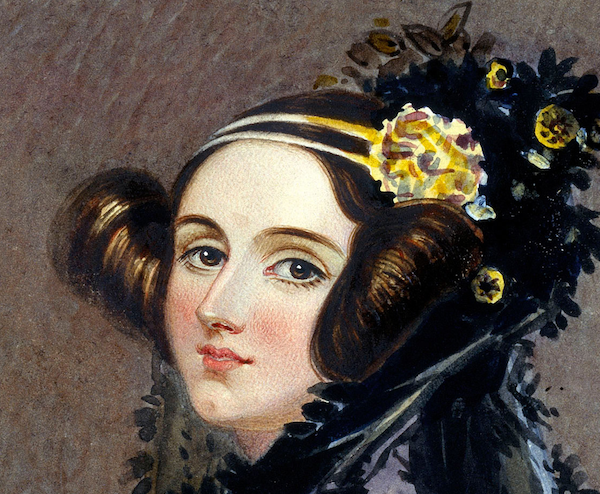“When [women] have been written out of the history, [girls] don’t have great role models. But when you learn about the women who programmed ENIAC or Grace Hopper or Ada Lovelace … it happened to my daughter. She read about all these people when she was in high school, and she became a math and computer science geek.”
-Walter Isaacson
Ada Lovelace: Prophet of Computer Age
Although she earned little public recognition during her lifetime, Ada Lovelace is now considered a pioneer and prophet of the computer age. In the first entry to his book Innovators, Walter Isaacson wrote: “Like Steve Jobs, [Ada Lovelace] stands at the intersection of arts and technology.”
Lovelace’s immersion in both fields began with her parents: Romanticism’s playboy poet Lord Byron and his “Princess of the Parallelogram,” a prim and proper product of the Industrial Revolution named Annabella Milbanke. As hinted by Lord Bryon arriving several days late to his own wedding, their marriage would not last. Although divorce was heavily stigmatized in England's Regency Era, Byron's incest with his half sister was even more taboo. Lovelace, then just four months old, would never know her father.
Fearing that her daughter might inherit Lord Byron’s manic tendencies, Annabella imposed on Ada a strict diet of mathematics and science. Lovelace’s tutors believed that, had she been a man, there would have been "potential to become an original mathematical investigator, perhaps of first-rate eminence.” Indeed, Ada’s processing power was reportedly so great she suffered from headaches that impaired her vision.
Although many men of the time feared “the very great tension of mind which [sophisticated mathematics] requires is beyond a woman’s physical power,” Lovelace viewed things differently, writing: “Nothing but a very close and intense application to subjects of a scientific nature now seems at all to keep my imagination from running wild, or to stop the voice which seems to be left in my mind.”
At 19, marriage led to three children in four years. At 26, encouraged by her husband, Lovelace returned to assisting her friend and mentor Charles Babbage, known as the father of the computer, on a project called “The Analytical Engine.” During this time, she was asked to translate Italian engineer Luigi Meneabrea's lecture notes from French to English. She found many errors and expanded on the original in her footnotes.
“The Analytical Engine has no pretentions whatever to originate anything,” she wrote in one of those footnotes. “It can do whatever we know how to order it to perform. It can follow analysis; but it has no power of anticipating any analytical relations or truths. Its province is to assist us in making available what we are already acquainted with.”
Thanks to those notes on the engine, Lovelace is now widely recognized as the first computer programmer.
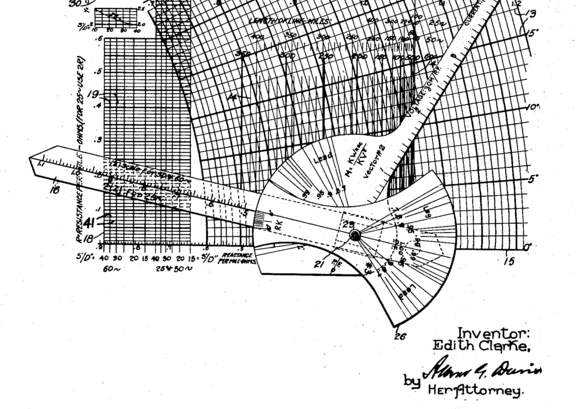
Edith Clarke: Keeps Current, Takes Charge
No matter the obstacle, Edith Clarke knew how to take charge of her own destiny: "I had always wanted to be an engineer, but felt that women were not supposed to be doing things like studying engineering.”
By no means, however, was Clarke’s rise simple and easy. Orphaned at age 12, she came of age in a Maryland boarding school. At 18, she received a small inheritance which took her through Vassar College, then Yale’s all-women sister institution; she graduated in 1908. After teaching gigs in San Francisco and Wisconsin, Clarke returned to the field full-time as manager of an all-female team of “human computers” at AT&T. She had reached the ceiling for women in electrical engineering.
Determined to continue her career doing what “women were not supposed to be doing,” the pioneering powerhouse next enrolled at MIT and became that institution’s first woman to earn an M.S. in electrical engineering. But even with such a degree, no company would hire female engineers. In response, Clarke left the United States to teach physics at Istanbul’s Women’s College. Again, she couldn’t stay out of the field, returning to the United States as a “human computer” for General Electric.
At GE, Edith Clarke created and patented The Clarke Calculator, a graphical device that solved equations used to send power through electrical transmission lines longer than 250 meters. Her massive contribution to transcontinental telephone communication silenced skeptics; in 1922, at 38, Edith Clarke became the first professional female electrical engineer.
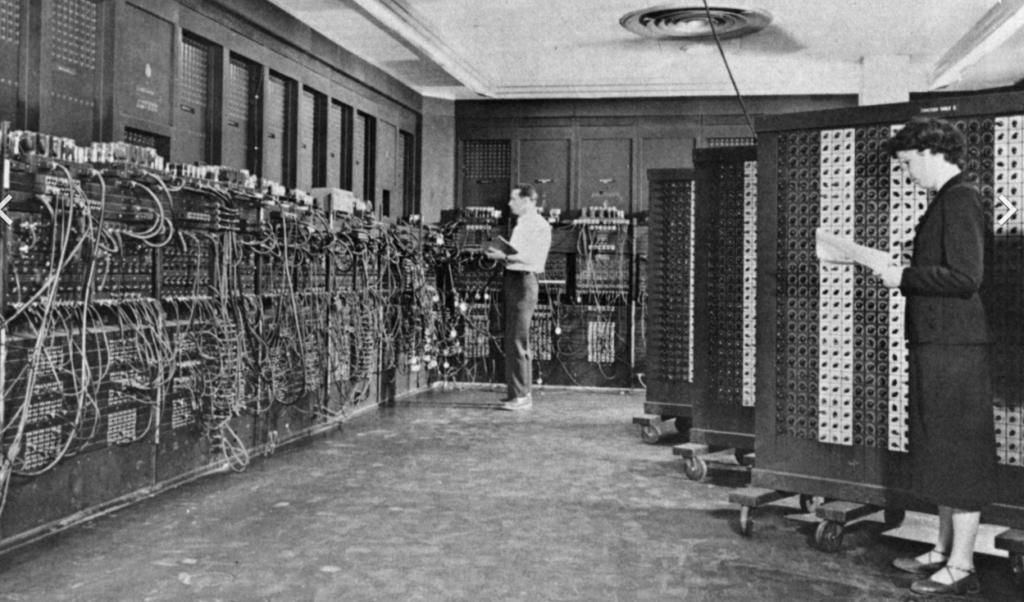
Women of ENIAC: Pioneers
The day before it debuted, the world’s first general-purpose computer failed to work. It was up to seven women to stay late and make the beast, dubbed ENIAC (Electronic Numerical Integrator and Computer) operational. They were:
- Betty Jean Jennings Bartik
- Kathleen McNulty
- Mauchly Antonelli
- Ruth Lichterman Teitelbaum
- Frances Bilas Spence
- Marlyn Wescoff Meltzer
- Frances Snyder Holberton
The system was neither small nor simple, weighing in at 30 tons and taking up a 1,500-square-foot basement. It came equipped with 18,000 vacuum tubes, 70,000 resistors, 10,000 capacitors, and 5 million hand-soldered joints. Considering its supposed aptitude with calculating ballistics trajectories, the need for it to work was great—the United States was mired deep in World War II.
“People never recognized, they never acted as though we knew what we were doing,” Betty Bartik would say later. “I mean, we were in a lot of pictures.”
It would take a few decades before these female computing pioneers received due recognition. In 1997, they were inducted into the Women in Technology International (WITI) Hall of Fame. In 2014, Walter Isaacson featured them in Innovators with the likes of Steve Jobs and Nikola Tesla. And last year saw the release of a documentary called the “Eniac Programmers Project,” which detailed how these women figured out how to program the machine.
After the war, many of the women of ENIAC went on to help “Amazing Grace” Hopper develop UNIVAC, the world’s first commercial computer.
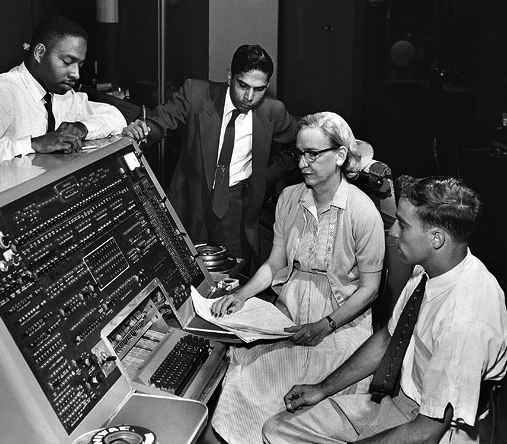
Grace Hopper - “Amazing Grace,” Queen of Software
Grace Hopper was a computer scientist, Yale Ph.D, and United States Navy Rear Admiral who also—on top of everything else—helped pioneer computer programming. “Humans are allergic to change,” she once said. “They love to say, ‘We’ve always done it this way.’ I try to fight that. That’s why I have a clock on my wall that runs counter-clockwise.”
In 1945, after 10 years of teaching, Hopper joined a new volunteer branch of the Navy known as WAVES (Women Accepted for Volunteer Emergency Service). At just 105 pounds, she was 15 pounds below that Navy minimum weight and had to receive a special exemption.
During her illustrious career, Hopper worked on UNIVAC I, the first commercial computer produced in the U.S., and created the first compiler. She is also credited with coining the term “computer bug” when she found a real moth inside the massive UNIVAC I.
If that wasn’t enough, Hopper also invented FLOW-MATIC, the first English-like data processing language, which helped spark the development of COBOL, which eventually became the Navy’s standard operating language.
Late-night show host David Letterman once asked Hopper, “You know you’re the Queen of Software, right?”
She replied: “More or less.”

Evelyn Boyd Granville: Race, Space, & Education Advocacy
Growing up in Washington, D.C. during the Great Depression, Evelyne Boyd Granville perpetually saw her glass as half-full. “I was aware that segregation placed many limitations on Negros,” she wrote. “However, daily one came into contact with Negroes who had made a place for themselves in society…”
Granville’s daily contact with such role models began at Dunbar High School, where highly educated teachers (white and black) instilled a belief in Granville that, regardless of race and gender, all deserved access to knowledge. “We accepted education as the means to rise above the limitations that a prejudiced society endeavored to place upon us."
Pinched pennies, financial aid, and academic scholarship made her continued education possible. Granville attended Smith College and then Yale for her Ph.D, becoming just the second African American women to receive a mathematics doctorate at any American University.
After a few years of teaching at Fisk University, an all-black college in Nashville, Granville began her professional career performing real-time’ calculations for satellite launchings. She studied rocket trajectories and methods of orbit computation as a part of the U.S. involvement in the space race. In 1967, Granville returned to the classroom, where she began an impressive 30-year commitment to education advocacy.

Sister Mary Kenneth Keller: First Female Computer Science PhD
The first woman to receive a Ph.D in Computer Science was a nun: Mary Kenneth Keller entered the “Sister of Charity” in 1932, professing her vows in 1940.
Keller received her B.S./M.S. Mathematics from DePaul University in Chicago and briefly studied at Dartmouth, breaking the “men-only” rule. While there, Keller played a significant role developing a key computer language: Beginner’s All-Puprose Symbolic Instruction Code, or BASIC.
Keller understood that the world was “having an information explosion… and information is of no use unless it’s available.” Thanks to BASIC, writing custom software was no longer restricted to mathematicians and scientists. Her contribution made computer use much more accessible to a broader portion of the population.
Keller returned to the Midwest and, in 1965, received her PhD from the University of Wisconsin. Clarke College in Dubuque, Iowa hired Keller to create and chair their Computer Science Department, where she continued to grow and share her knowledge for 20 years.

Susan Kare – The Apple Icon
Although our next pioneer briefly worked for Microsoft, Susan Kare is best known for her work with Bill Gate’s nemesis, Steve Jobs.
Kare followed dreams of a career in the fine arts to San Francisco. A chance encounter with an old high school friend landed her an interview with Apple. Steve Jobs, inspired by Xerox’s graphical user interface (GUI), was on the hunt for an artist who could design Macintosh’s icons. She got the job. “The morale is to have confidence in your skill mix,” she later said. “Because I certainly didn’t have a computer background.”
Using a pad of graph paper, Kare designed icons that were simple, elegant, and playful. The original designs were just 32 x 32 pixels. Kare is also responsible for developing the command (“Apple”) key as a stylized castle seen from above.
As part of her Apple work, Kare created the typeface Chicago, used in the first four generations of the iPod. To keep the lettering smooth and seamless, all lines were purposefully made horizontal, vertical, or on a 45-degree angle. That sort of attention to detail has continued to define Apple to this day.
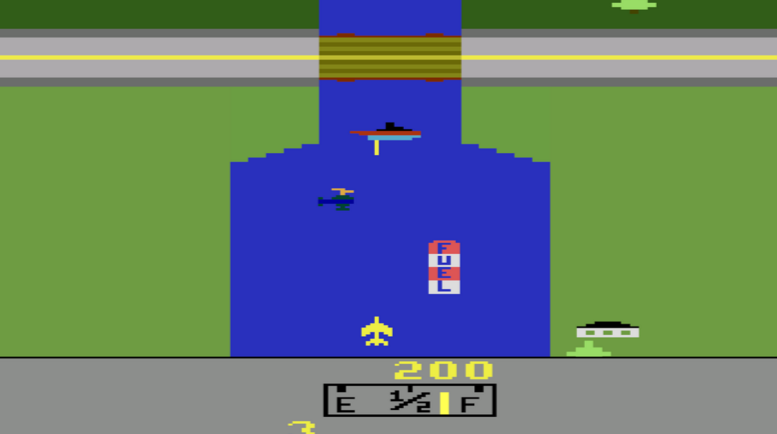
Carol Shaw – Atari Game Developer
Carol Shaw was born and raised in Palo Alto, CA. Always excellent at math, it wasn’t until she inherited her brothers’ model railroad that Shaw began tinkering with electronics: “I actually designed some circuitry … with some transistors and stuff that would turn on the signal light for various blocks showing there was a train up ahead.”
Fresh out of Berkeley’s Computer Science graduate program, Shaw accepted a position at game-maker Atari in the late 1970s. Wearing thick-rimmed glasses and flannel, she biked 10 miles each way to design and program video games.
Eventually landing at Activision, Shaw programmed one of the Atari’s best-known shooter games, River Raid. For the first time, gamers could experience an inordinate amount of non-random, repeating terrain despite constrictive memory limits. River Raid was the first game that allowed the shooter to accelerate and slow down all over the screen.
Shaw’s work as a pioneer game designer has made her a legend to two generations of tech pros and gamers.
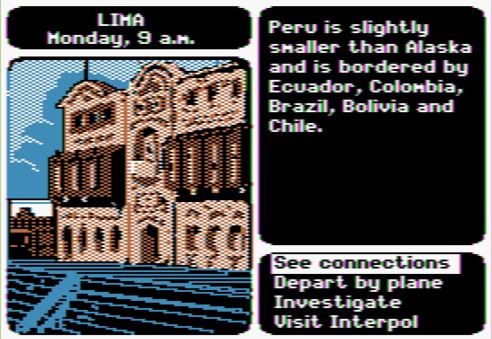
Janese Swanson: Can You Make it Pink?
Easy was never an option for Janese Swanson. After her father died in Vietnam, she began helping her mother clean houses for extra cash. One day, while cleaning a wealthy doctor’s home in La Jolla, CA, Swanson shared a dream of becoming a doctor herself. The doctor’s wife advised: “It will be easier for you if you marry a doctor.”
At age 15, she fibbed her date of birth and started slinging televisions at Sears. Many years later, Swanson would use her electronic sales experience as manager of the computer and technology department at a small store called My Child’s Destiny. Interested in the nexus of technology and children education, she received Computers in Education Certificate from Berkeley, all while raising her daughter.
In 1988, Swanson began working for Broderbund Software Company, developing games for kids such as, “Where in the World is Carmen Sandiego?” However, she struggled there as “[we women] earned far less than there male colleagues… had to raise hands to get a word in [at meetings] … and always had a hard time getting men to focus on what we were saying rather than our legs and breasts.” She quit, got her Ph.D from San Francisco State, and, in 1995, started her own toy company, Girl Tech.
Swanson initially struggled to find investors and vendors. “For two years after I founded the company, toy store buyers would say, ‘Can you make it pink’ [or] ‘Can you make it for boys?’ And I would say, ‘No, this is what girls like to play with.’”
It wasn’t easy but, in 1998, Swanson sold Girl Tech to Radica Games Limited for $6 million. She remained with the company for 2 years as vice president.
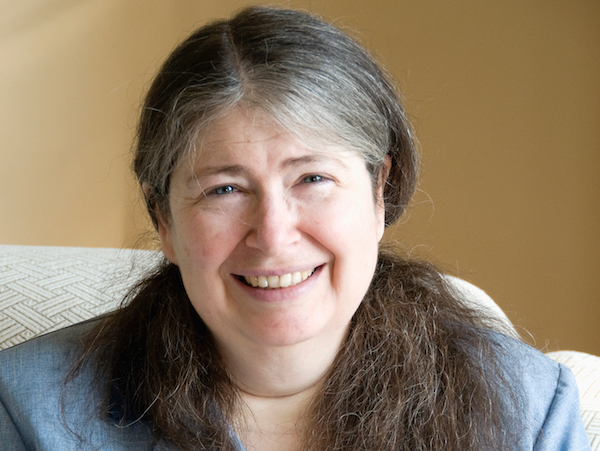
Radia Perlman – “Don’t Call Me Mother of the Internet”
Who’s going to break the news to Al Gore? Radia Perlman, often described as the ‘Mother of the Internet,’ insists that, “The Internet was not invented by any individual.”
Perlman did, however, create the algorithm behind the Spanning Tree Protocol (STP), which is an essential part of the Internet’s underlying foundation.
As a child, Perlman put a lot of pressure on herself to get straight A’s. Although she excelled at all subjects, she naturally gravitated to math and science because she could control her grades by just knowing the right answer. Although her mother was a mathematician/computer programmer, similar to the women of ENIAC, the two rarely spoke about programming.
Perlman went on to MIT, just one of handful of females in her class (~50 of 1,000 students). In 2000, Perlman published her textbook "Interconnections," greatly simplifying network routing and bridging. “My book created order,” she later said. “It was easy to understand while being conceptually thought-provoking, and a large part of the technology described was stuff I’d invented.”
Despite her success, Perlman keeps a level head and credits others equally for her success: “In engineering, the point is to get the job done, and people are happy to help. You should be generous with credit, and you should be happy to help others.

Dr. Gladys West is inducted into the Air Force Space and Missile Pioneers Hall of Fame during a ceremony in her honor at the Pentagon in Washington, D.C., Dec. 6, 2018. West was among the so-called "Hidden Figures" part of the team who did computing for the U.S. military in the era before electronic systems. The Air Force Space and Missile Pioneers Hall of Fame is one of Air Force's Space Commands Highest Honors.(Photo by Adrian Cadiz)
Gladys West
Gladys West is largely hailed as the figure whose mathematical work led to the invention of the Global Positioning system (GPS). She programmed the IBM 7030 ‘Stretch’ computer that delivered refined calculations for a geodetic Earth model, which eventually became known as GPS. In 2018, she was inducted into the Air Force Space and Missile Pioneers Hall of Fame.
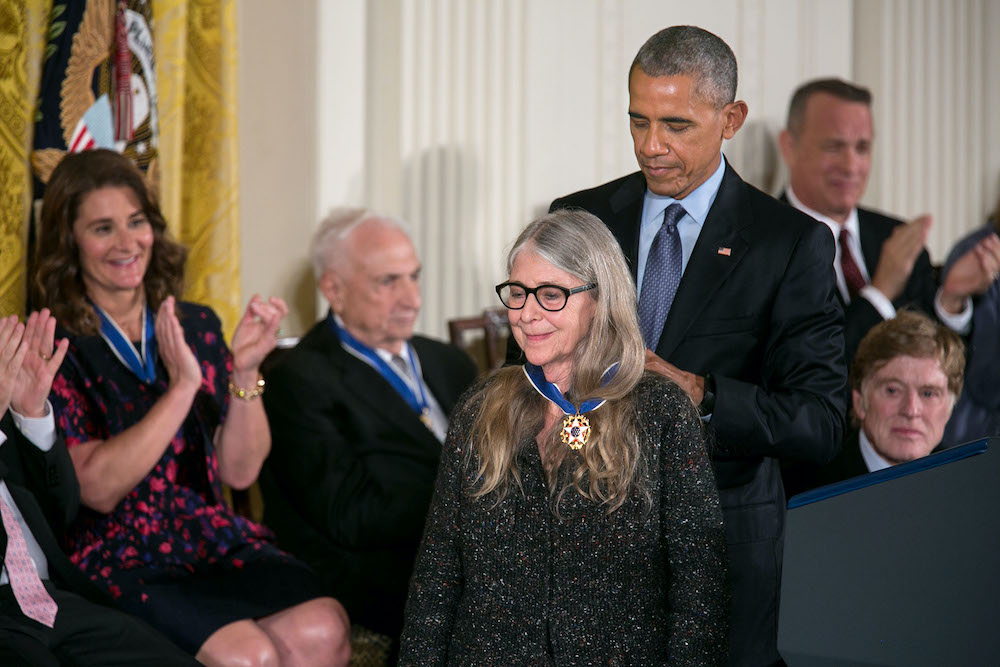
President Barack Obama presents the Presidential Medal of Freedom to Margaret H. Hamilton during a ceremony in the East Room of the White House, Nov. 22, 2016. (Official White House Photo by Lawrence Jackson)
Margaret Hamilton
Margaret Hamilton is an American computer scientist, systems engineer and business owner. Hamilton was the Director of the Software Engineering Division of the MIT Instrumentation Laboratory, which designed the onboard flight software that made Neil Armstrong and Buzz Aldrin’s Apollo mission possible. On November 22, 2016, she received the Presidential Medal of Freedom from President Barack Obama for her work on NASA’s Apollo Moon missions. After her stint developing software for NASA, she founded two software companies.
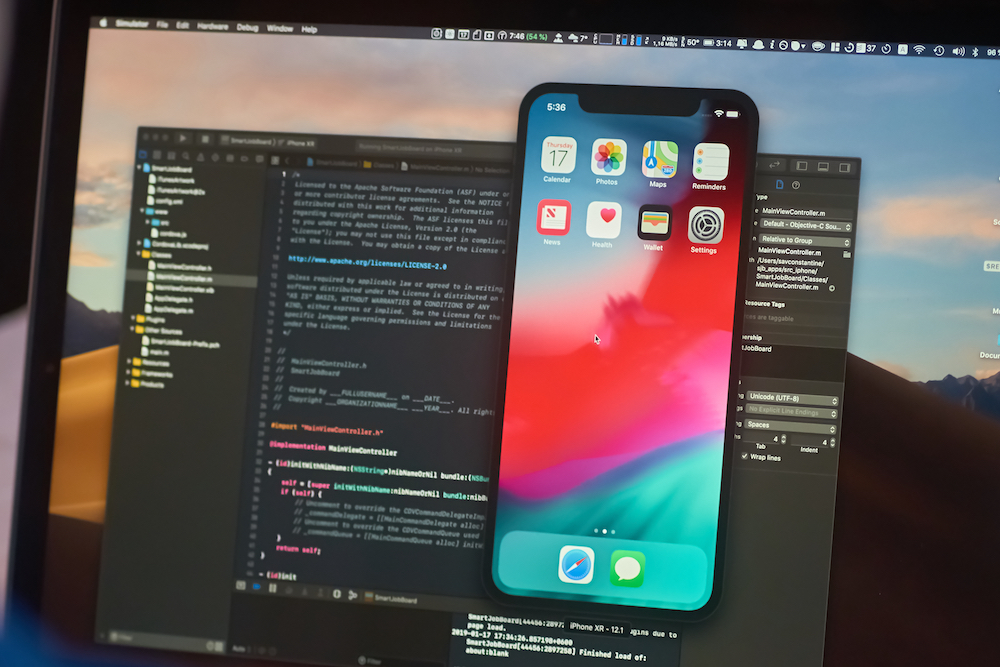
Adele Goldberg
Without Adele Goldberg, the Apple desktop environment might look very different today. While working at Xero Palo Alto Research Center (PARC), Adele was the only woman in the group that built Smalltalk-80, one of the most popular and influential early programming languages. She also presented Smalltalk to Steve Jobs, who implemented many of these concepts into Apple’s first products. Beyond Apple, many modern Graphical User Interfaces (GUIs) have design standards that trace directly back to Goldberg’s original work.
